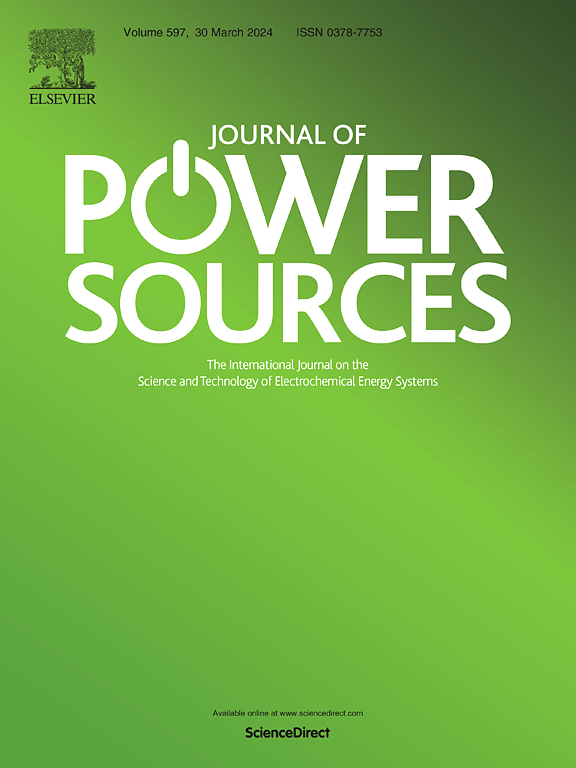Anode-supported fuel cell with promising Co-free (La,Pr)2(Ni,Cu)O4-based cathode
IF 8.1
2区 工程技术
Q1 CHEMISTRY, PHYSICAL
引用次数: 0
Abstract
La1.5Pr0.5Ni0.4Cu0.6O4+δ (LPNC) and La2NiO4+δ (LN) oxides are applied and compared as cathodes in the anode-supported fuel cells with the Ce0.8Sm0.2O2-δ (SDC) thin electrolyte. LPNC and LN samples are synthesized by citrate-nitrate method. Doping of LN with Pr and Cu leads to a reduction of the final annealing temperature down to 750 °C. The optimal sintering temperature for electrode fabrication is also reduced to 950 °C, compared to 1000 °C for undoped LN. Differential analysis of i-V characteristics (DiVA) for the studied LPNC/SDC/Ni-SDC fuel cells shows that potential drop with increasing current is mainly associated with ohmic losses and gas diffusion limitations at higher current densities. The contribution of the activation polarization increases when LPNC is replaced by LN indicating slower electrode reaction in the latter. Electrochemical Impedance Spectroscopy (EIS) studies show that the polarization resistance of the studied fuel cells is mainly determined by the cathode in the temperature range of 600–750 °C. Fuel cell tests reveal that LPNC has significantly higher ORR activity than undoped LN. The maximal power densities for the LPNC/SDC(28 μm)/Ni-SDC fuel cell are 1.46, 1.25, 0.94 and 0.62 W cm−2 at 750, 700, 650 and 600 °C, respectively.

求助全文
约1分钟内获得全文
求助全文
来源期刊

Journal of Power Sources
工程技术-电化学
CiteScore
16.40
自引率
6.50%
发文量
1249
审稿时长
36 days
期刊介绍:
The Journal of Power Sources is a publication catering to researchers and technologists interested in various aspects of the science, technology, and applications of electrochemical power sources. It covers original research and reviews on primary and secondary batteries, fuel cells, supercapacitors, and photo-electrochemical cells.
Topics considered include the research, development and applications of nanomaterials and novel componentry for these devices. Examples of applications of these electrochemical power sources include:
• Portable electronics
• Electric and Hybrid Electric Vehicles
• Uninterruptible Power Supply (UPS) systems
• Storage of renewable energy
• Satellites and deep space probes
• Boats and ships, drones and aircrafts
• Wearable energy storage systems
 求助内容:
求助内容: 应助结果提醒方式:
应助结果提醒方式:


